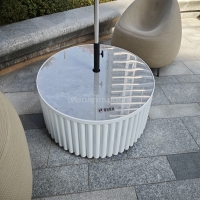Welcome to the website for landscape facilities products and knowledge.
How does the bin’s design ensure that it is easy to integrate into existing waste management systems?
The design of modern waste bins plays a crucial role in ensuring they seamlessly integrate into existing waste management systems. Here’s how:
1. Modular Sizes and Shapes: Bins are designed in standardized dimensions to fit common waste collection vehicles and sorting facilities, reducing compatibility issues.
2. Smart Technology Compatibility: Many bins now feature IoT sensors or RFID tags, allowing them to sync with digital waste management platforms for real-time monitoring and optimization.
3. Material and Color Coding: Clear color-coding and material labeling (e.g., blue for recycling, green for organic waste) align with global waste segregation standards, simplifying sorting processes.
4. Ergonomic Features: Designs include easy-open lids, foot pedals, or touchless mechanisms to encourage proper use and reduce contamination in waste streams.
5. Adaptable Mounting Systems: Bins can be wall-mounted, freestanding, or embedded in urban infrastructure, ensuring flexibility for diverse environments.
By prioritizing these elements, bin designs not only enhance user convenience but also streamline waste collection, sorting, and recycling within existing systems.
Related search:

Recommendation
Round metal tube border design table with tempered glass or granite countertop on the top.